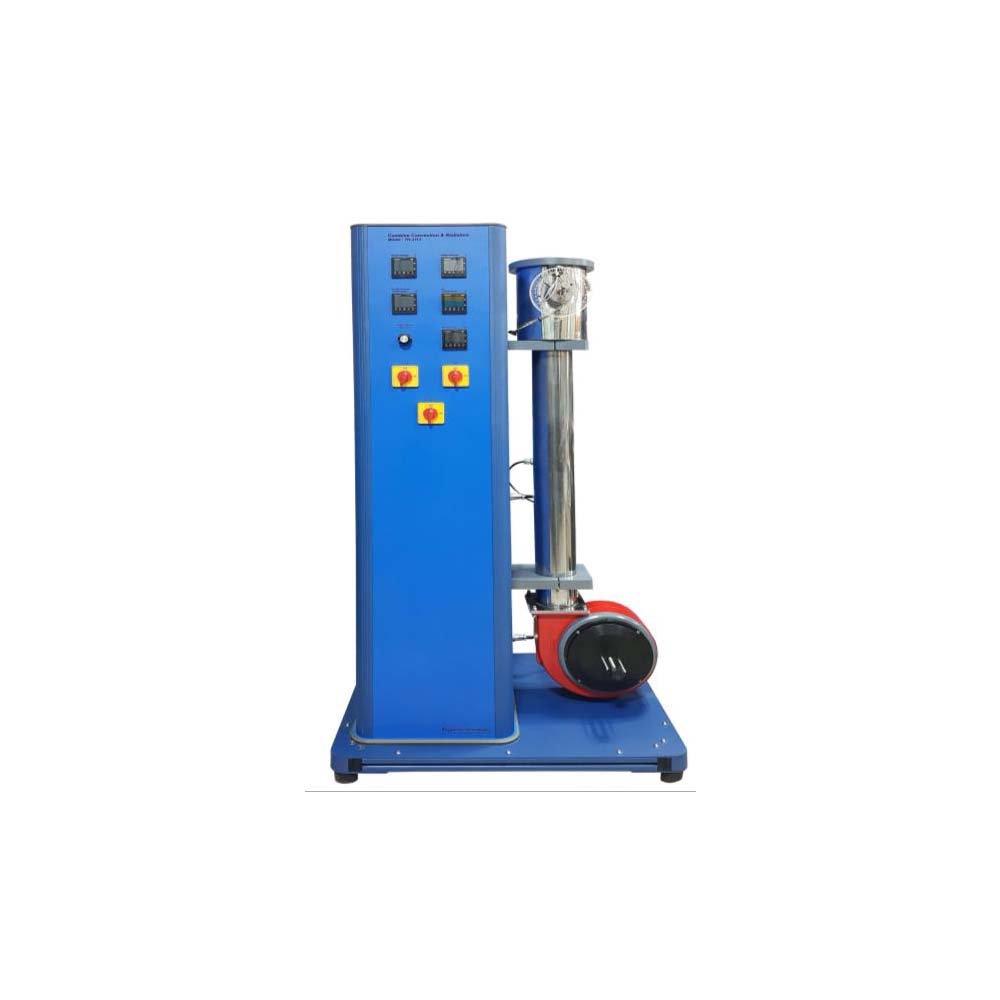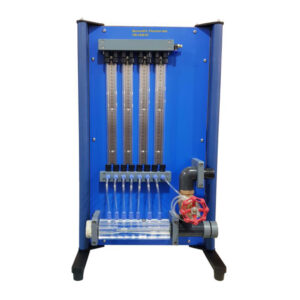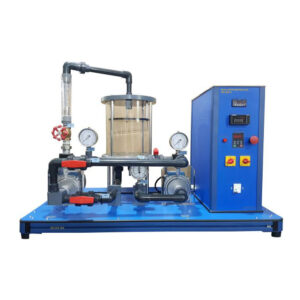A hot surface losses heat (heat is transferred) to its surroundings by the combined modes of convection and radiation. In practice these modes are difficult to isolate, so an analysis of the combined effects at varying surface temperature and air velocity over the surface provides a meaningful teaching exercise. The heated surface studied is a horizontal cylinder, which can be operated in free convection or forced convection when located in the stream of moving air. Measurement of the surface temperature of the uniformly heated cylinder and the electrical power supplied to it enables the combined effects of radiation and convection to be compared with theoretical values. The dominance of convection at lower surface temperatures and the dominance of radiation at higher surface temperatures can be demonstrated as can the increase in heat transfer due to forced convection.
Experiment
- Determination of the combination of heat transfer (Convection & Radiation) from a horizontal cylinder in natural and forced convection over a variety of power input and corresponding surface temperature.
- Determination of the convective heat transfer coefficient hc at low surface temperature and the domination of the radiant heat transfer hr at high surface temperature.
- Study of the effect of the forced convection on the heat transfer from the cylinder at varying air velocity.
Specifications
- A small-scale accessory to introduce students to the principles of combined convection (free and forced) with radiation from a horizontal heated cylinder.
- Comprises a heated cylinder mounted in a vertical air duct, with a fan at the base of the duct, which can be used to provide a variable air flow over the cylinder.
- Heater rating 100W at 24V DC.
- K-type thermocouples measure the air temperature upstream and the surface temperature of the cylinder.
- On the computer-controlled unit, the air flow is electronically adjustable over the range 0-10 m/s by a variable-speed fan, otherwise it is manually adjustable.
- The air flow rate is measured by a anemometer in the outlet duct.
- A comprehensive instruction manual is included.




